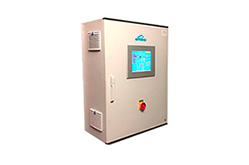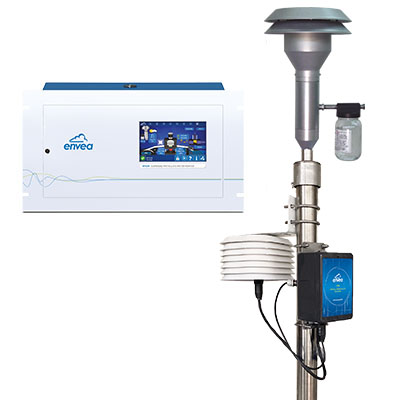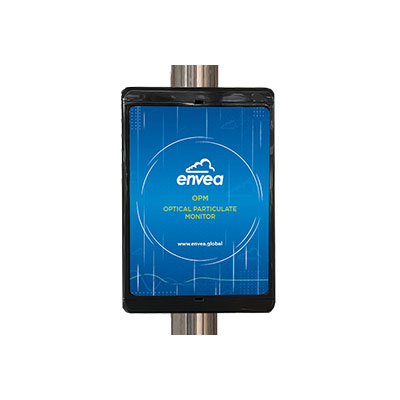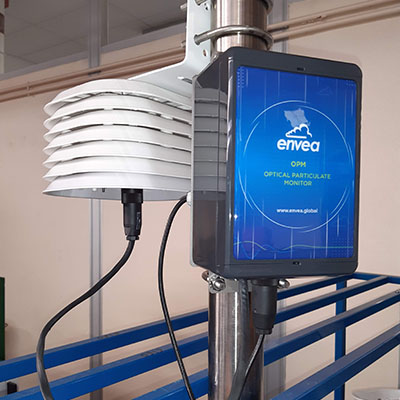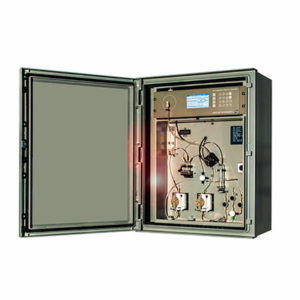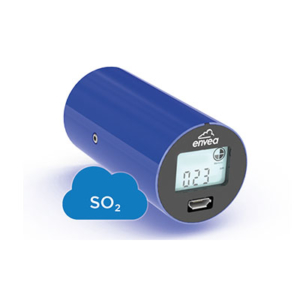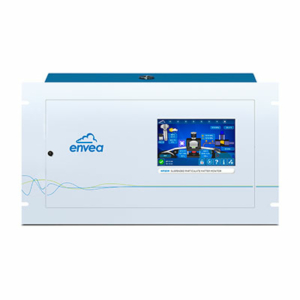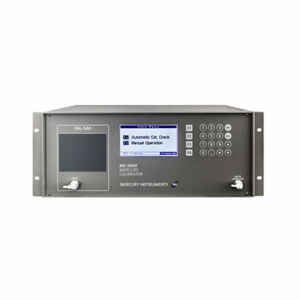MEDIDOR DE PARTÍCULAS SUSPENSAS AUTOMÁTICO E EM TEMPO REAL MP101M + OPM
Medidor MP101M com fonte Beta associado a sensor OPM (Optical Particle Monitor) opcional
O método de medição de fonte Beta ISO 10473 do analisador MP101M permite, quando utilizado com a tecnologia óptica do módulo OPM, a medição contínua e simultânea de partículas finas.
O instrumento de atenuação beta está em conformidade com EN 16450 para os padrões europeus PM10 e PM2.5. Certificado QAL1 pela TÜV, o MP101M também é aprovado como Método Equivalente Federal (FEM) pela EPA dos EUA para monitoramento contínuo de partículas finas em suspensão PM10 e PM2. 5
- Monitoramento preciso de PM10, PM2.5, PM1
- Indicação óptica em tempo real da concentração de massa de PM10, PM2,5, PM1 (μg/m3)
- Recursos e benefícios
- Principais aplicações
- Especificações Técnicas
- Opções e acessórios
- Princípio de Funcionamento
- Transferências
- Controlo de fluxo de ar volumétrico verdadeiro com 3 sensores de pressão atmosférica e temperatura
- Taxa de fluxo de amostragem continuamente regulada para a temperatura e pressão atmosférica: reduz os artefactos de evaporação de compostos voláteis (obrigatório para PM2,5 de acordo com os regulamentos da UE)
- Calibração automática do módulo ótico em tempo real (OPM) para a medição de referência (medidor ß)
- Calibração do caudal possível durante a medição
- Medidor de referência integrado para calibração: não necessita de recalibração de fábrica
- Ecrã de calibração para sensores de pressão atmosférica
- Tubo de amostragem regulamentado (RST) compatível com CEN PM10 e norma US-EPA: amostra não afetada por fatores sazonais ou geográficos e evita perdas por evaporação de partículas semivoláteis
- Fita de fibra de vidro com 3 anos de autonomia de amostragem contínua com ciclos diários (1200 ciclos)
- Fonte plana selada C14 de baixa atividade com duração de vida útil do analisador
- Instrumento robusto, não sensível a vibrações, humidade, temperatura…
- Novo: Servidor web integrado compatível com qualquer browser de internet. Interface de utilizador ENVEA Connect™ com ligação on -line ajuda para visualização, configuração, manutenção, diagnóstico ou atualização de software do analisador, remotamente, a partir de qualquer PC, tablet ou smartphone.
- Monitorização da qualidade do ar ambiente
- Monitorização de poeiras internas
- Locais de trabalho
| Especificações técnicas do MP101M | |
|---|---|
| Parâmetro medido | PM10, PM2.5, PM1, TSP |
| Tecnologia | Atenuação dos raios beta |
| Aprovação US-EPA/Certificação QAL 1 | SIM |
| Faixas de medição | até 10.000 μg/m3 |
| Unidades de medida | µg/m3 |
| Limite inferior detectável (2σ) | 0,5 μg/m3 (média de 24 horas) |
| Taxa de fluxo de amostra | 1 m³/h |
| Bomba de amostragem | Externo (bomba de vácuo) |
| Intervalo de temperatura | +5°C a 40°C |
| Armazenamento de dados | Ilimitado |
| E/S incluída | LAN/USB/WIFI/AO |
| Peso (Kg) | 15,2 (+bomba: Picolino 4,6Kg / KNF 9,4Kg) |
| Dimensões mm (CxLxA) | 360,5 x 483 x 266 |
| Chassis | Rack de 19″, 3U |
| Compensação de pressão e temperatura | SIM |
| Especificações técnicas do OPM | |
|---|---|
| Tecnologia | Dispersão da luz (*) |
| Máx. concentração | 0-1000 μg/m3 |
| Intervalo de tamanho | 0,3-10 μm |
| Limite de deteção inferior | 1 μg/m3 |
| Resolução temporal | 1 segundo |
| Dimensões (LxPxA) | 230 x 370 x 200 mm |
| Fluxo | 2,5 L/min |
(*) As tecnologias de dispersão da luz aplicadas à medição da concentração mássica das partículas podem ser afetadas pela composição química dos aerossóis e pelas condições atmosféricas e ambientais. deve estar sujeito à interpretação do operador.
- Módulo OPM para medição óptica em tempo real
- Entradas de amostragem em conformidade com a EPA dos EUA e a UE-CEN
- Tubo de amostragem com temperatura regulada (RST): 1 m, 1,5 m, 2 m, 2,75 m, compatível com a Directiva CEN PM10
- Max 2 placas eletrónicas ESTEL com:
– 4 entradas/saídas analógicas independentes
– 4 entradas de controlo remoto
– 6 saídas de contactos secos - Conjunto da bomba externa: diafragma (9,5kg), palheta rotativa (7kg)
- Módulo de calibração span fácil de instalar para calibrações automáticas e programáveis
- Kit de ligação de campo para teste de fugas e zero (no tubo RST)
- Kit de ligação de laboratório para teste de fugas e zero (no MP101M)
- Medidor de caudal de cordão para teste de fugas
- Filtro HEPA para teste zero
Os raios beta de baixa energia são absorvidos pela colisão de poeiras, cujo número é proporcional à densidade. A absorção é, portanto, função da massa do material irradiado, independentemente da sua natureza físico-química.
A combinação de ambas as tecnologias proporciona uma medição de partículas aprovada simultaneamente, MAIS indicação em tempo real de PM10, PM2,5 e PM1.
